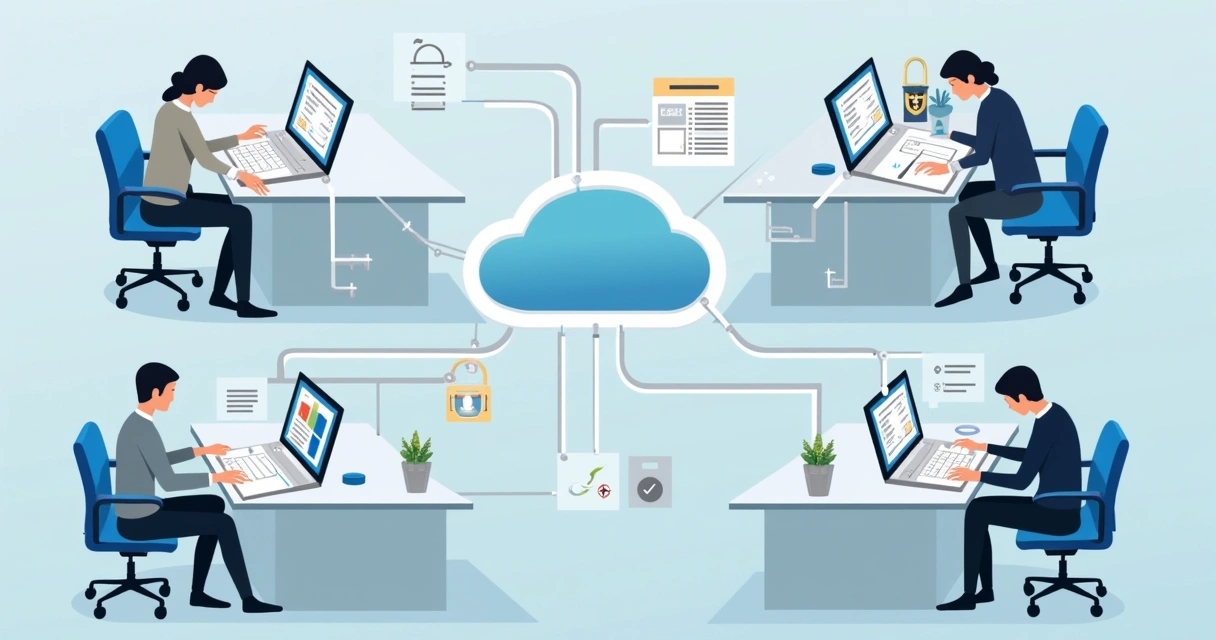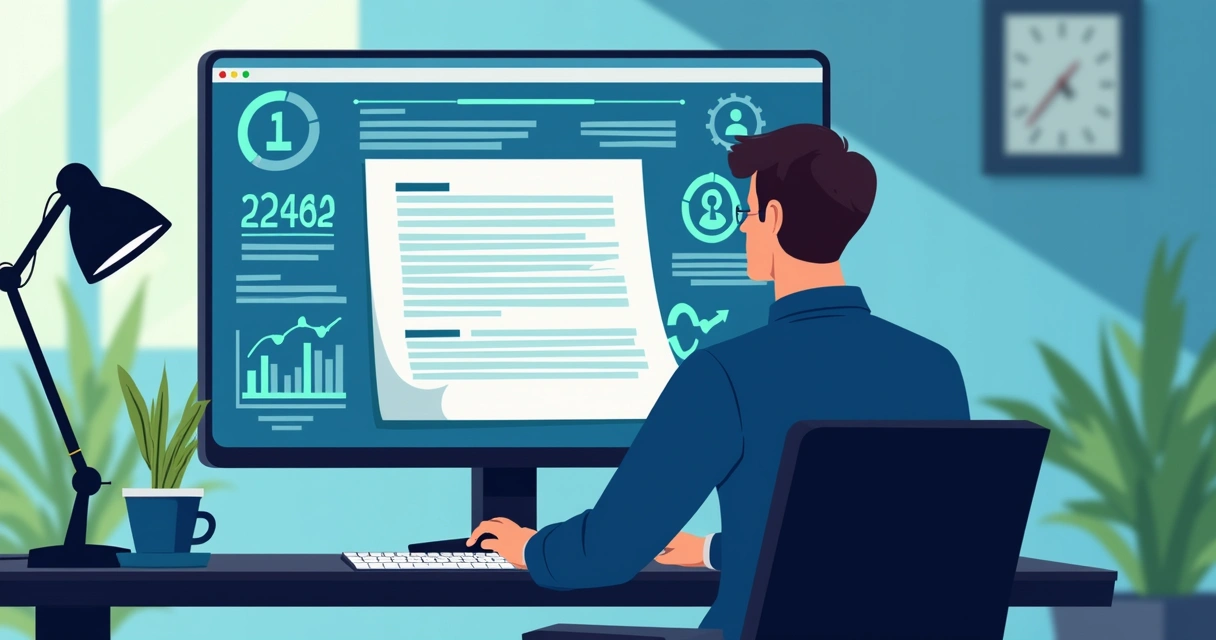Sometime around 2019, I remember thinking, “Will there ever be a day when I don’t need to print, sign, scan, and send a contract?” That day, I think it arrived sooner than we expected. Now, if you step into any modern business, odds are they’re using electronic document signing , and with good reason.
A 2024 Statista study shows that over 75% of organizations worldwide have already moved to digital document approval. That’s a massive shift. But before you switch, it’s worth pausing and asking: how does this technology work, is it really secure, and what should you know before jumping in?
Where e-signature started and where it’s going
At first, “signing online” simply meant typing your name or drawing a squiggle with your finger. Nowadays, it’s a different world. According to PDF Reader Pro’s 2025 research, digital signing is expected to hit $12.1 billion in global revenue by 2030. That’s partly because people just want things to move faster and easier: another survey shows 70% of users prefer digital signing because it’s quick and simple. For many, that’s all that matters.
Go paperless, gain time. Lose the paper, not the process.
But not all tech is made equal. While companies like DocuSign and Adobe get much of the spotlight (GlobeNewswire’s 2025 report), emerging platforms like CloudSign.ie don’t just repeat the basics, they offer safer, faster, and sometimes even free options for individuals and teams.

Electronic vs. digital signature: what’s the difference?
People often use “electronic signature” and “digital signature” the same way. They aren’t quite the same, though:
- Electronic signature: Any mark or process (typed names, scanned signatures, ticked checkboxes) showing you approve a document. The main goal is to capture intent.
- Digital signature: Uses cryptography to secure a document with a unique code. Every modification breaks the signature, so it’s not just proof of intent but a guarantee nothing’s been tampered with.
Both methods can be legally binding in places like Ireland and the EU, provided they meet legal requirements and have proof of who signed, when, and how. The eIDAS regulation, for example, ensures electronic and advanced digital signatures have legal effect across Europe, but the context matters: sensitive contracts may require stricter authentication or advanced digital signing.
Security and authentication: what keeps it all safe?
A swipe of your finger feels casual, but what if it’s a million-euro contract? Security isn’t just an add-on. The best platforms , and here CloudSign.ie shines , stack several layers:
- Authentication: Users verify identity through email, SMS codes, or even secure portals.
- Integrity: Encryption ensures nobody can alter the document without detection.
- Audit trails: Every action is recorded, including IP addresses, timestamps, and even device types.
Every signature leaves a digital footprint. It’s your shield and your record.
Consumers may overlook some of these details, but businesses shouldn’t. A breached contract, an unsigned field, or a missing audit log can spell disaster.
Integration into business workflows
Today’s workflows don’t run on isolated tools. Integration is the new standard. Document signing is most powerful when it fits right into your daily systems:
- Link with CRMs to send contracts automatically when deals close.
- Use APIs to trigger onboarding documents for new hires.
- Sync signed files to Google Drive or Slack for instant access.
CloudSign.ie is engineered with these connections in mind, offering out-of-the-box integrations and an open API so businesses (from freelancers to large companies) can build automated flows without custom coding.I’ve seen some organizations forget this , and then spend hours chasing unsigned PDFs. Imagine a recruitment team who gets contracts signed, tracked, and archived at every point, with reminders set up to chase holdouts. It’s a different pace.
Advanced features: ai, templates, and unlimited signing
As companies demand more, digital signing platforms have stepped up with smarter features. AI is now used for:
- Highlighting risky clauses automatically in contracts.
- Suggesting template sections based on document type.
- Extracting key points or deadlines, reducing manual review.
Templates are another timesaver. Instead of rewriting the same NDA fifty times, you just input names and dates, the rest is filled in and sent for signing in minutes.Unlike others, CloudSign.ie’s free plan allows individuals to send up to 21 documents a month, forever. For businesses, unlimited sending and advanced analytics mean no bottleneck, even at scale.

Meeting legal and regulatory standards
None of this matters if your signatures aren’t valid. Irish and EU laws pay close attention to how identity is confirmed, how records are kept, and whether both parties consented. Following rules like eIDAS and GDPR isn’t only about compliance , it’s what allows contracts to hold up in court. Here, platforms like CloudSign.ie specifically build in tools to help organizations meet these standards without extra effort.
If you’re curious about specifics, government agreements, HR policies, sales contracts, and even purchase orders can all move online. The result? Faster project starts, reduced risk of lost paperwork, stronger legal protections, and , perhaps my favorite , fewer headaches for everyone involved.
Getting started with electronic document signing
- Acknowledge what you need: Is this for simple internal approvals, or high-stakes client deals?
- Pick a solid solution: Preferably, one with actual legal coverage, not just a fancy UI. Platforms like CloudSign.ie meet Irish, UK, and EU legal requirements directly.
- Train your team: Even the best tech misses its mark if no one uses it correctly. Many find success sending their people to guides like the CloudSign beginner’s guide to electronic signatures.
- Automate where possible: Connect signing tools to your CRM, payroll, or HR systems. It’s a step that saves days, not minutes.
- Stay updated: Keep an eye on evolving laws (for example, e-signature validity in Ireland).
For Irish small businesses or freelancers, dedicated advice is out there; relevant reads include practical e-signature tips for freelancers and a special guide for small businesses.
While big names continue to dominate market share, it’s specialized platforms like CloudSign.ie , which put compliance, advanced AI, and affordable pricing front and center , that give organizations an edge. There's no reason to wait, try a free forever plan and see how far digital document signing can take your business, wherever you are.
Frequently asked questions
What is an electronic signature?
An electronic signature is any digital mark or process (typed, drawn, scanned) used to show approval of a document. It proves intention and can be legally binding if certain requirements are met. You can find step-by-step instructions for using them in a complete beginner’s guide.
How does digital signing work?
Digital signing uses cryptographic technology to create a unique code, linked to the signer’s identity and the document itself. This method blocks tampering, if anything changes after signing, the signature breaks. It’s most often used for sensitive contracts requiring the strongest legal proof.
Are e-signatures legally binding?
Yes, when certain conditions are met. Platforms that meet standards like eIDAS and GDPR, like CloudSign.ie, ensure contracts are legally valid across Ireland and Europe. It’s important to check what level of verification and record-keeping you need for each case. The legal facts about electronic signatures in Ireland offer more guidance.
How secure are online document signatures?
Online signing is very secure when platforms use encryption, multi-factor authentication, and full audit trails. Any changes or odd access attempts are flagged right away. That said, organizations should still review their vendor’s security policies before committing.
Which is the best e-signature platform?
While companies like DocuSign and Adobe attract plenty of attention, platforms like CloudSign.ie provide stronger value for many users. CloudSign.ie stands out for unlimited document sending, AI-driven features, robust compliance options, and a generous free plan for individuals. For those needing speed, security, and local legal coverage, it’s hard to beat.
